A series of recent and upcoming exhibitions from the Michael C. Carlos Museum and Emory Libraries underscore Emory’s preeminence as a site for research and programming based on the work of artists of the African diaspora diverse in their place of practice, media and generation but each illuminating the Black experience in unique ways.
“What is happening here is quite remarkable,” says Valeda Dent, vice provost of libraries and museum. “There is a collective focus on the expansion of access to knowledge and art in a variety of forms, facilitated by leveraging the important partnerships that are all around us.”
Breaking ground with their most recent exhibitions, the libraries and museum are focused on elevating the work of Black artists by working with one another — and with collaborators across the city — in new ways.
“Together: Selections from the Cochran Collection of African American Art” ended its run at the Carlos on Aug. 8., but the entire collection is being acquired by Emory. In addition to the scholarly possibilities opened up by bringing the collection to the Carlos, a number of artists who have given their papers to the Stuart A. Rose Manuscripts, Archive, and Rare Book Library are part of the Cochran Collection, including Camille Billops and Mildred Thompson, thereby opening up further territory for research.
The Sheila Pree Bright exhibit “breathe.” — now on display in the Robert W. Woodruff Library’s Schatten Gallery — marks the first time Emory Libraries have showcased a contemporary local artist’s work whose papers are not housed here and the first time Carlos curators have mounted an exhibit in the libraries.
And beyond Emory’s boundaries, these exhibits reflect the depth of community partnerships, with an undergraduate student from Spelman College, Alexandra Nelson, co-curating “Together”; the exhibits by visual artist La Vaughn Belle taking place both at the Carlos and Clark Atlanta Art Museum; and a symposium on the Virgin Islands, “dECOlonial Feelin,” being hosted at both Emory and Clark Atlanta University.
An artist-elevating, game-changing collection comes to the Carlos
During a July 24 curatorial conversation about “Together,” Henry Kim, associate vice provost and museum director, excited the capacity crowd that had braved a stormy night by announcing that Emory is acquiring the collection owned by Wes and Missy Cochran of LaGrange, Georgia.
“It will be absolutely game-changing to the university and the museum, as it will give us the chance to become important players in the study, research and display of artists in this collection,” Kim says.
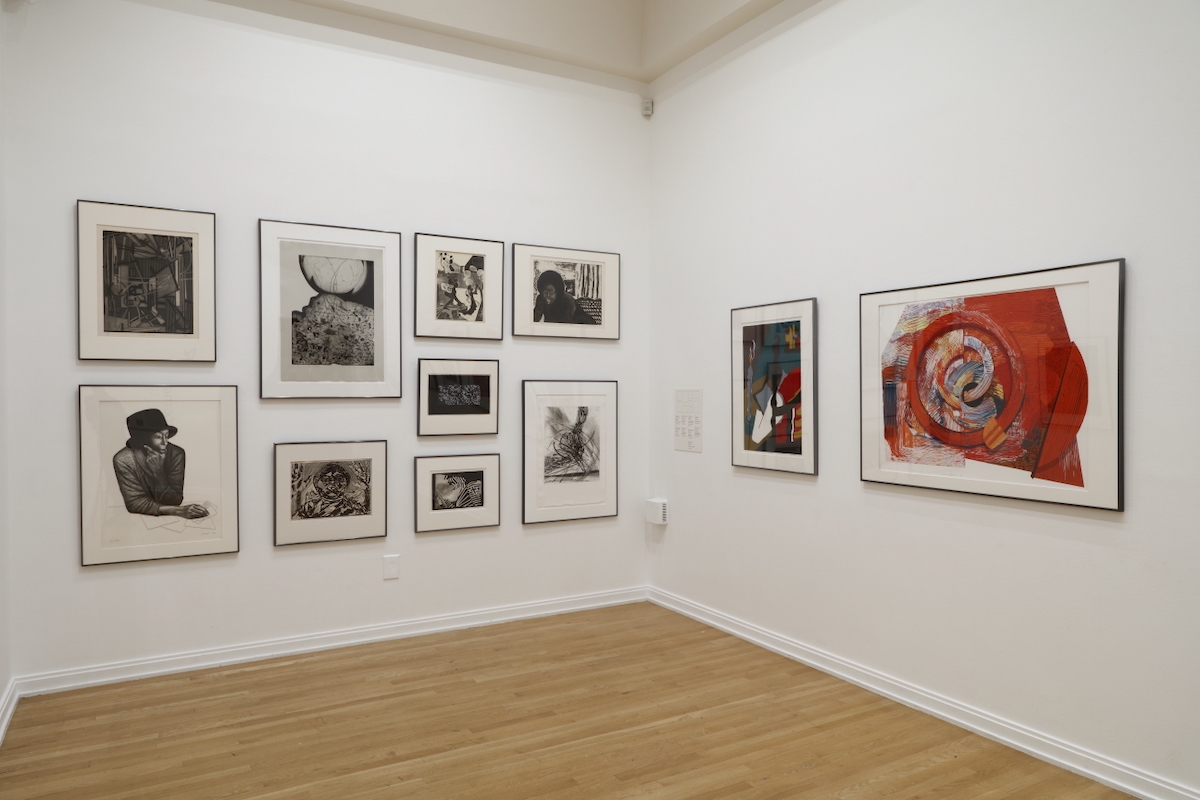
Installation images from “Together: Selections from the Cochran Collection of African American Art.”
Photo by Mike Jensen
The Cochran Collection features more than 500 works, highlighting Black artists Romare Beardon, Camille Billops, Robert Blackburn, Sam Middleton, Mildred Thompson and many others whose artistry amplified significant social, political and historical themes from the early 1900s to today.
Notes Andi McKenzie, co-curator of “Together” and the curator of works on paper at the Carlos: “It is nothing short of miraculous that these pieces have been brought together but also that they have been shared in this way. One of the strengths of the collection is that it exposes us to artists who still have not been adequately recognized by art scholars.”
The stonemason and teacher who are its patrons
The backstory of how the collection was formed is a delightful, perhaps improbable, odyssey in the annals of art collecting but one that testifies to the vision and determination of the Cochrans.
McKenzie calls the couple “a two-person museum,” and indeed they have been not only tirelessly dedicated to buying and displaying Black art at the Cochran Gallery they established in LaGrange; they also have made it a point to travel the South with works from the collection to increase public and scholarly access to the artists.
With fortitude and passion, the Cochrans built their collection while holding down day jobs — Wes as a stonemason and Missy as a teacher.
During the curatorial conversation, Wes shared that the original bug to collect art came from his uncle, William L. May, a significant player in the collection world. Eventually, May held one of the largest private holdings in the country — consisting of more than 1,200 pieces — of old-master prints encompassing 500 years of printmaking.
Living with his uncle after graduating from college in 1974, Wes recalls him saying: “Find a job, make some money and I will start buying you art.” That push immediately began in earnest, with Wes getting a first-class art education from his uncle, whom he terms “flamboyant, a great talker, as colorful a character as you would ever like to meet.”
However, after making impressive strides — acquiring works by artists such as Andy Warhol, James Rosenquist, Jasper Johns, Will Barnet and others — the Cochrans took time to self-reflect in the late 1980s and changed the course of their collecting.
“If you were shopping in the mainstream collection world,” Wes says, “you would find yourself with works by almost all white males. We realized that we had never stopped. We never looked. We had kept buying the same art.”
Wanting to do more to raise the visibility of other deserving artists, Wes and Missy began their focus on African American artists in 1988 when they attended an Atlanta exhibition of works by five Black women artists, including Howardena Pindell. In less than a week, the Cochrans visited Pindell at her New York studio, and she introduced them to other Black artists.
Camille Billops: artist, activist and unforgettable character
One New York-based artist was Camille Billops. Wes cold-called her when he and Missy were in New York City. He recalls: “After talking a while, she said: ‘Look, are you white or Black?’ ‘I’m white,’ I answered, and she said: ‘Come on over anyway.’”
“We rushed down to her loft at the corner of Broadway and Broome,” says Wes, which was a “4,000-square-foot loft full of art. When I met her, I thought my uncle had been reincarnated. She was as flamboyant and visionary as he was.”
Billops told the Cochrans that they would have to educate themselves about Black art. “We left that day with no art but lots of books she loaned us,” Wes remembers. That was the beginning of a 30-year relationship with Billops, whom Wes credits as the true curator of their collection.
No gallery system existed at that time for Black artists, who were tightly networked in New York City and supporting one another.
“Camille knew everyone, so we wrote down names and telephone numbers and started calling artists. Word got around that this young white couple from Georgia was buying art and the check was not bouncing. I didn’t know it at the time, but most of these artists living in New York were from the South,” says Wes.
Mildred Thompson, based in Atlanta, was one of the few artists not then calling New York City home. Following a connection that Robert Blackburn had made for him, Wes got on the phone with her, opening with: “’I am Wes Cochran from LaGrange, Georgia.’ The first thing she said was, ‘Where in the hell is LaGrange, Georgia?’ That was the beginning of another beautiful relationship,” he laughs.
McKenzie describes Thompson’s sheer originality: “At my core, I’m a scholar of printmaking because, since their inception, prints have made art and historical narratives accessible. In Mildred’s work, I was seeing something I’d never seen before, techniques I didn’t understand. And then there was her bold subject matter — space, time, dimensions, particles, quarks, the fabric of matter itself.”
Thompson’s papers are held at Emory’s Rose Library, featuring materials that document her work as an artist, musician, photographer, writer and teacher.
With Billops’ help, the Cochrans were able to show their Black art collection, consisting of 75 pieces, in downtown Atlanta in 1991. Versions of that collection have traveled to 65 museums across the country, with Wes and Missy literally doing all the heavy lifting. Reserving their monetary resources for art, they did everything themselves, including creating the catalogs as well as framing, crating and transporting the works.
For several more decades, the Cochrans continued their relationship with Black artists, determined to make the collection — according to Wes — “stronger, deeper and more comprehensive.” Their practice was to buy directly from the artists and pay the asking price. They estimate that they spent about $40,000 a year from the stonemason salary Wes earned.
In 2002, Billops and her husband, James Hatch, placed a portion of their collection to the Rose Library. The Camille Billops and James V. Hatch Archives is a landmark collection of oral history tapes, scripts of unpublished plays, posters, photographs, and books and periodicals. Among the several hundred playscripts are works by Amiri Baraka, Ossie Davis, Ruby Dee, Lorraine Hansberry, Zora Neale Hurston, Wole Soyinka, Melvin Van Peebles, Derek Walcott and Richard Wright.
In 2016, a Rose Library exhibition, “Still Raising Hell: The Art, Activism, and Archives of James V. Hatch and Camille Billops,” celebrated the 50-plus years that the couple had been stewards of African American history and memory, as reflected in their archive. The Artist and Influence series that they launched at Emory continues as a collaboration of the Rose Library and Billops-Hatch Advisory Board, on which Wes Cochran serves. The next installment in the series features actresses Anna Maria Horsford and Victoria Rowell on Sept. 14 at 1 p.m. in the Jones Room of the Robert W. Woodruff Library; registration is suggested.
Creating a broader community to elevate Black art
Andi McKenzie will never forget her first visit to LaGrange to see the Cochran Collection.
“I learned everything I ever needed to know about being a curator. It’s about facilitating access to art, which means that more narratives emerge, more voices are heard and more scholars are created. To the Cochrans, this was nothing new, of course, because making their collection available to scholars, curators, artists and students has always been core to their mission,” she says.
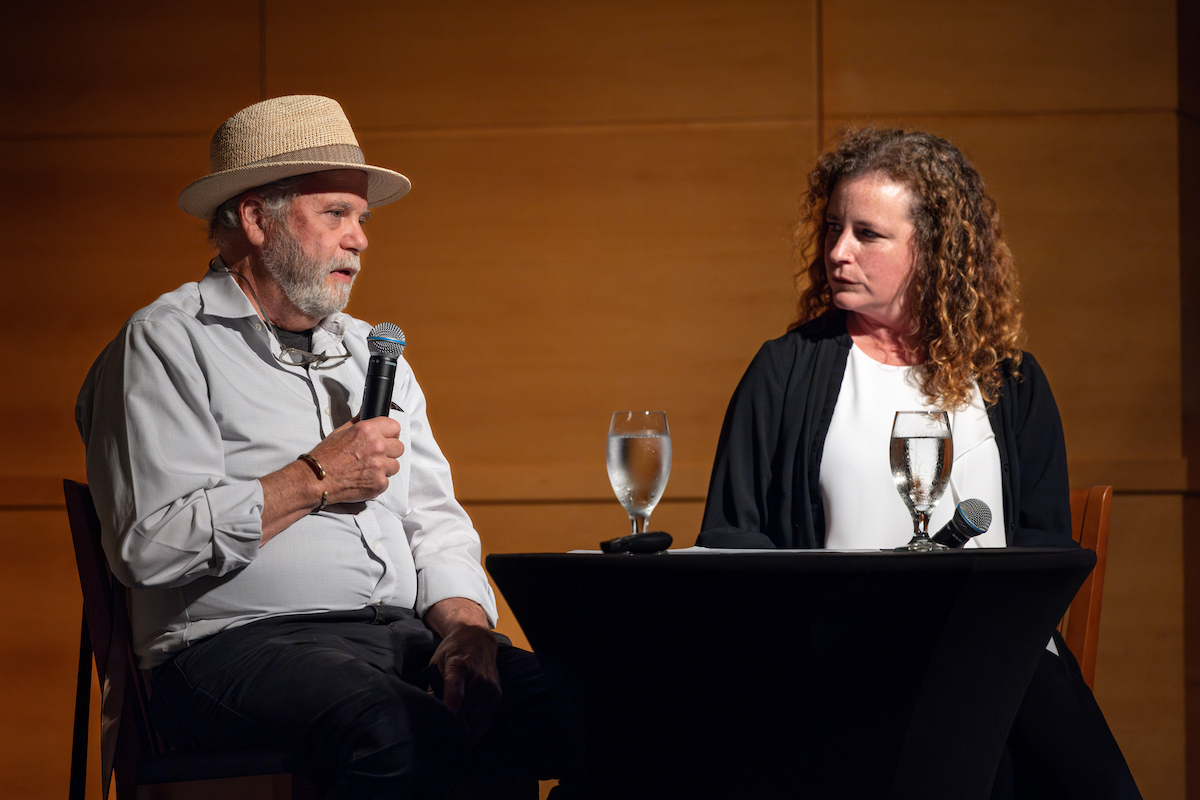
Andi McKenzie, co-curator of “Together,” interviewed Wes Cochran about the collection he and his wife, Missy, established, consisting of more than 500 works by Black artists who amplified significant social, political and historical themes from the early 1900s to today.
Photo by Emory Photo/Video
For “Together,” McKenzie partnered with Alexandra Nelson, a senior at Spelman College who is also the founder and CEO of Black Kid Art — dedicated to increasing Black visibility within the arts through community outreach.
The exhibit was an acclaimed prelude to the permanent arrival of the collection.
McKenzie sees the collection as fertile ground for research.
“It’s asking scholars to engage,” she notes. “Not only in expanding the canon of American art but joining in the necessary process of rewriting it entirely — with an eye toward inclusivity.”
“Imagine the dissertations that can be written utilizing the Cochran Collection in tandem with the archive of African American artists’ papers at the Rose Library, the collections at Clark Atlanta University, Spelman College and Atlanta University Center’s Woodruff Library,” she says.
Lisa Macklin, associate vice provost and university librarian, notes that “the Rose Library has been building collections documenting the art, culture and lives of African Americans since the mid-1990s. This foundation serves to bring collections and people in conversation with each other, whether with the Carlos or our colleagues in other Atlanta libraries and archives. These synergies allow students and researchers to understand the important stories being told in new and exciting ways.”
Turning down the noise with the art of Sheila Pree Bright
If you need to “just breathe,” and who among us doesn’t, an exhibition in the Woodruff Library that opened Sept. 11 in the Schatten Gallery will help viewers do just that.
“breathe.” is an exhibition of landscape images by photographer Sheila Pree Bright, best known for her photographs exploring African American culture and activism.
The tightly focused images are taken from two of Bright’s series, “Belonging” and “Behold the Land.” The landscapes originated as photographs of places of trauma during the civil rights movement and the slavery era. Bright’s technique is to zoom in to change the focus from trauma to feelings of meditative calm.
She took the original landscapes during the pandemic, when the isolation drove her closer to nature, she says. Bright also spent a few years photographing the Black Lives Matter demonstrations in Atlanta, Baltimore, Ferguson, Baton Rouge and Washington, D.C.
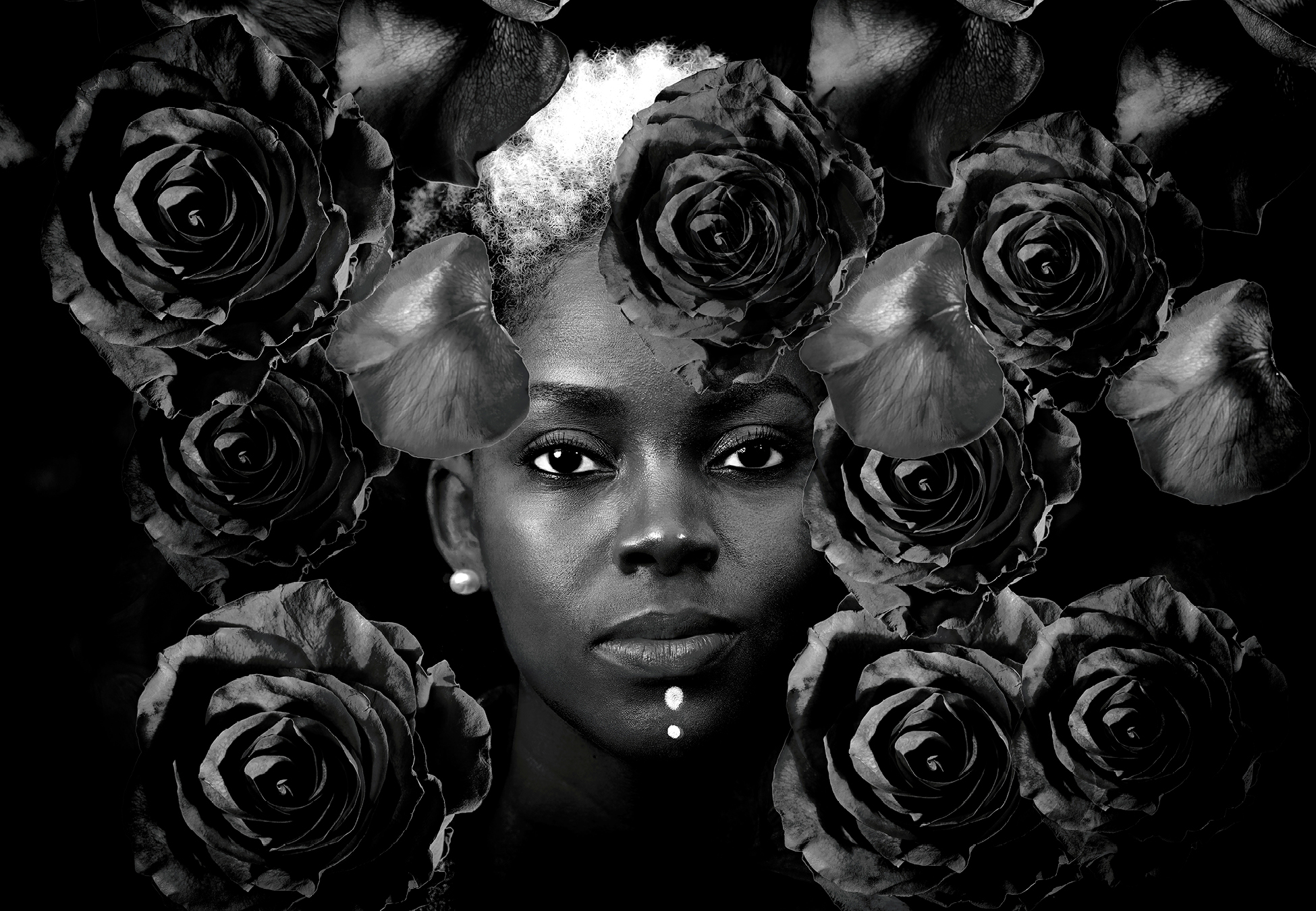
This untitled image is part of Sheila Pree Bright’s “Behold the Land” series, which is visible in the exhibit “breathe.” on display in the Woodruff Library’s Schatten Gallery through Dec. 21.
“I was thinking about all the noise that we’re going through in the world, nationally and globally,” she says. “I thought it would be interesting to create a sanctuary for people to come and meditate.”
“There are many firsts about this exhibition, one of the most important being the activation of art, introspection and wellness in a traditional academic space,” says Dent. “Sheila Pree Bright’s work reminds us how the land can hold past trauma but also how it can cradle and spread peace and stillness. We are honored that she chose Emory as an exhibition space.”
Bright is a Georgia artist who received her MFA from Georgia State University and was the focus of a solo exhibition in 2023, “The Rebirth of Us,” at Atlanta’s Jackson Fine Art Gallery. Her work has also been included in multiple exhibitions across the country and in Georgia at the Spelman College Museum of Fine Art, the Georgia Museum of Art in Athens and the High Museum of Art.
Running through Dec. 21, the exhibition is open to the public at no charge. Related events include an Atlanta Art Week conversation with Bright and McKenzie at 6:30 p.m. in the library’s Jones Room on Sept. 30, followed by an opening ceremony hosted by Emory’s Office of Spiritual and Religious Life (OSRL) in the Schatten Gallery. Guided meditations in the exhibition led by OSRL and art-making sessions with Carlos Museum programming staff are planned throughout the exhibition’s run.
Art and activism focused on the Virgin Islands
On Sept. 19, Emory College of Arts and Sciences, Emory Libraries, the Carlos Museum and the Clark Atlanta University Art Museum will host “dECOlonial Feelin,” an international symposium focused on the Virgin Islands and offering a space to engage with ecological thought and anticolonial practice.
Led by the Virgin Islands Studies Collective and Emory professor of English and creative writing Tiphanie Yanique, the three-day event will use art, poetry, archives, philosophy, storytelling, anthropology and spiritual practice as lenses.
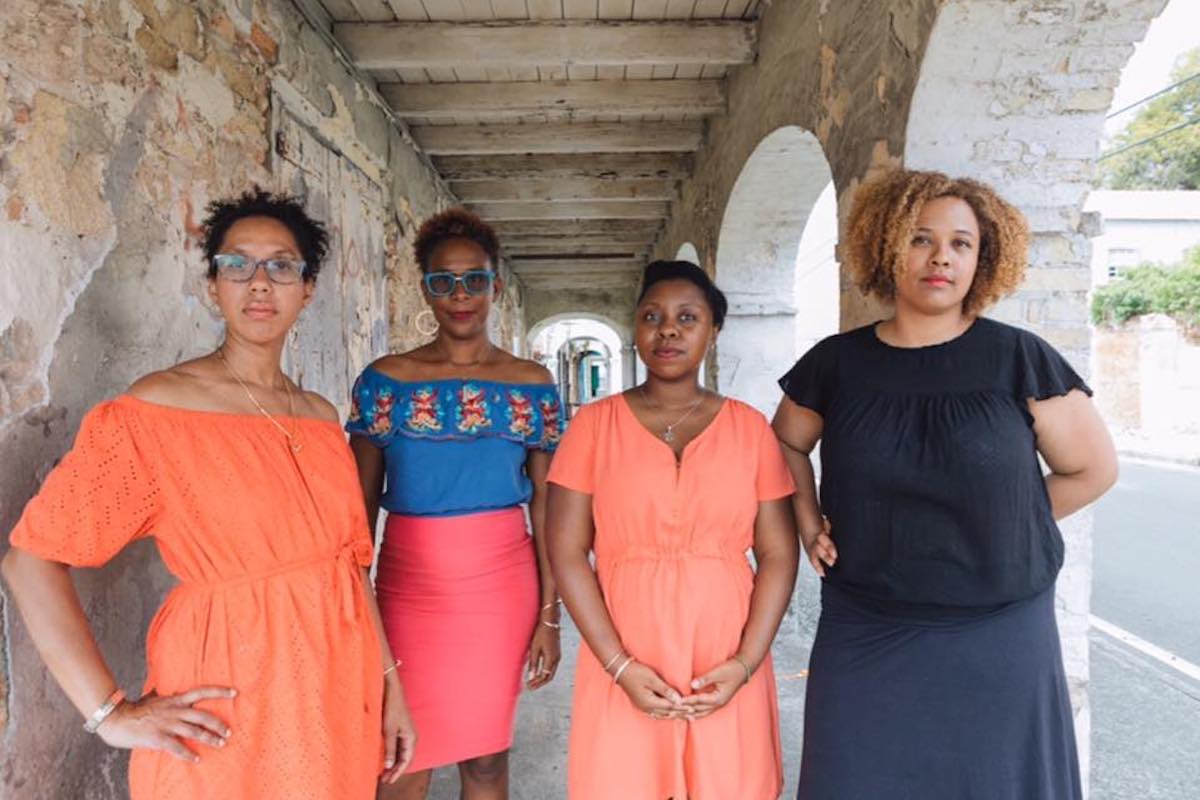
The scholars of the Virgin Islands Studies Collective (l to r): Tiphanie Yanique, La Vaughn Belle, Hadiya Sewer and Tami Navarro.
Photo by Nicole Canegata
The symposium opened in the Virgin Islands in May with white papers and community conversation, and it continues to Atlanta with a weekend of lectures, exhibits and workshops.
Its Atlanta programming will begin with members of the Virgin Islands Studies Collective addressing the role of the natural environment in major revolutionary movements in Virgin Islands history and current day-realities. Visual artist La Vaughn Belle will present on fire, novelist and poet Tiphanie Yanique on water, anthropologist Tami Navarro on air and philosopher Hadiya Sewer on land.
“The ’dECOlonial Feelin‘ symposium will be a weekend of revelry and reflection. Together we will think through, act through and feel through ways to be more free within our natural and made environments,” says Yanique.
As part of the symposium, Yanique will read a new short story, “Beach,” influenced by feminist literary traditions, decolonial forms and the importance of water in Caribbean societies. The story is set on a composite island of the Virgin Islands during the carnival season.
Those interested in attending the symposium can learn more about the schedule and register.
Yanique is also offering fall courses at Emory in which the symposium is a primary text. One is a graduate seminar, Decolonial Pedagogy and Practice. Students will attend the symposium and create lesson plans that will eventually be part of the virtual museum and archive that the Emory Center for Digital Scholarship is now designing on decolonial art and scholarship.
She will also teach a first-year seminar, Decolonial Practice and Thought. Class members will attend the symposium, be introduced to decolonial concepts, and write poetry and stories that arise out of their learning.
LaVaughn Belle takes audiences by storm
A major component of the symposium is the opening of two exhibitions featuring the work of Belle.
“Come Ruin or Rapture,” opening in the Carlos Museum on Sept. 19 and on view through Dec. 8, includes work from two of Belle’s series, “Storm (in the time of spatial and temporal collapse)” and “Storm (how to imagine the tropicalia as monumental),” where she uses materials from her studio that were exposed to Hurricane Maria in 2017. These repurposed materials take on new forms, expressing the resilience of people of African descent in the Virgin Islands in the face of natural disasters and colonial powers.
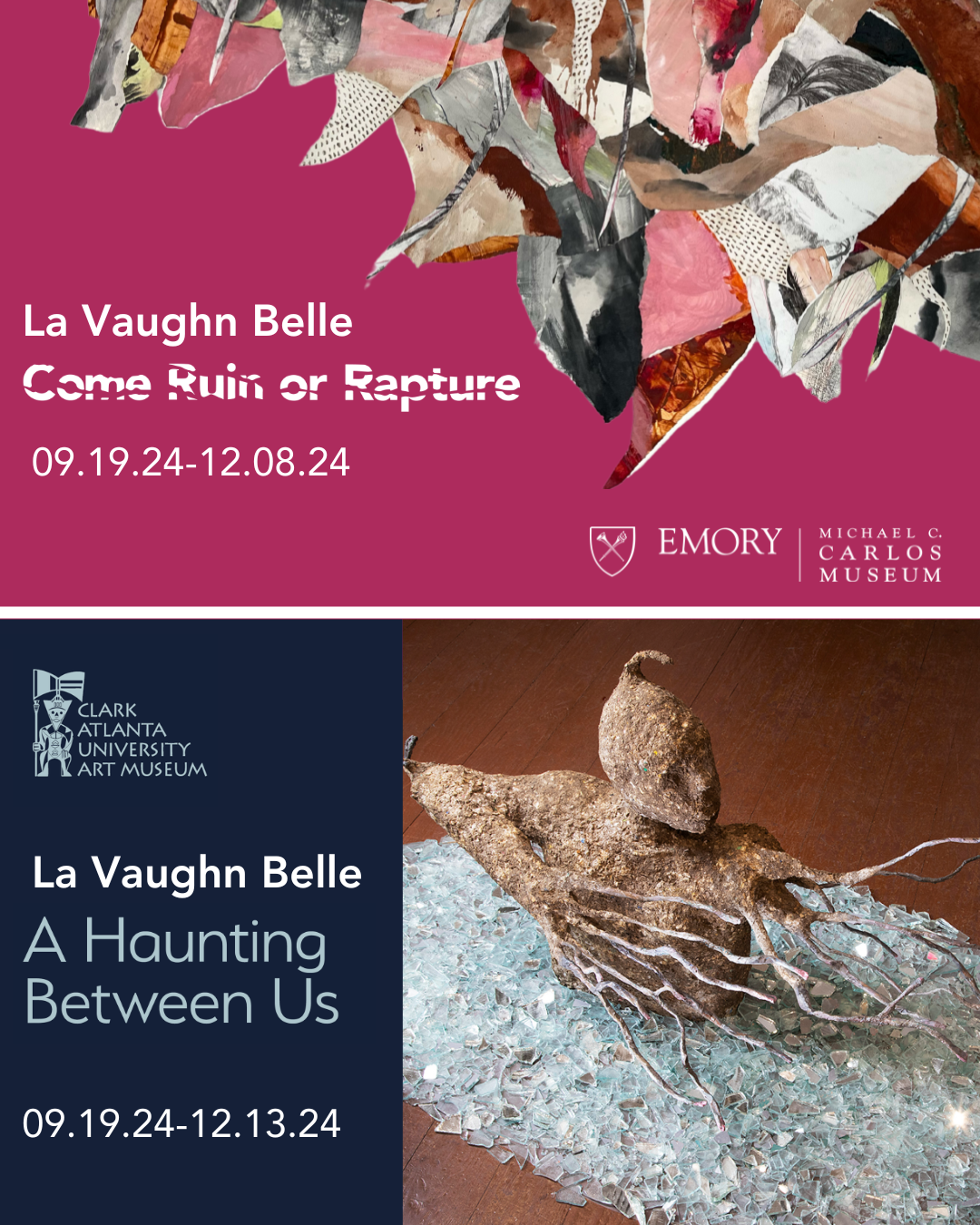
Artist La Vaughn Belle’s work, part of the symposium “dECOlonial Feelin,” will be on view at the Carlos Museum and the Clark Atlanta University Art Museum during fall semester.
The exhibition “A Haunting Between Us,” opening Sept. 19 and on view through Dec. 13 at the Clark Atlanta University Art Museum, displays work from Belle’s “Swarm” series, which delves into the Danish colonial archives and uses images from the Danish West Indies.
Belle reimagines these images through a method of cutting and burning that not only changes them but utterly transforms their colonial context by removing Black bodies from scenes of servitude and highlighting them as subjects of strength and perseverance. As she says, “The haunting is a call to decolonization and the dismantling of systems that keep us fragmented.”
Clinton Fluker, who curated both exhibitions, is senior director of culture, community and partner engagement at the Emory Libraries and Carlos Museum. He sees the partnership with colleagues at Clark Atlanta University to display Belle’s work as “the groundwork for what we hope will be continued collaborations in years to come.”
“It’s been a pleasure and honor to collaborate with La Vaughn Belle to explore her work examining the history of the Virgin Islands, the lingering effects of colonialism and the transformative power of art and culture to aid in forging a new future,” he says.
A fall lineup of uncommon richness
The programs being generated across Emory libraries and museum, as well as across the city, are individually powerful; together, the full tapestry is even more resonant and thought-provoking.
“These unique collaborations allow Atlanta’s faculty, students and community members to take advantage of signature, immersive experiences that bring to life histories that belong to us all,” says Dent.

